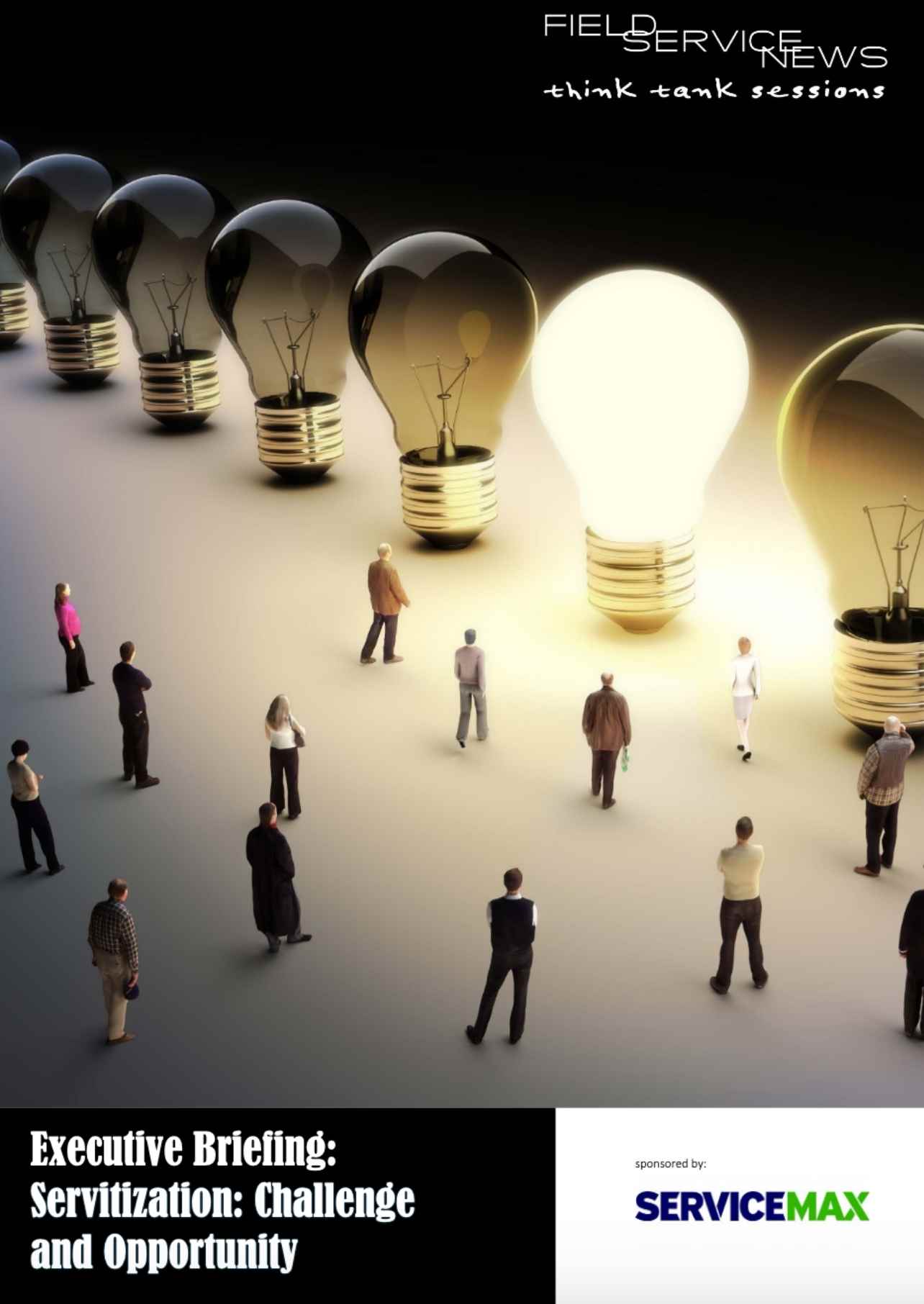The Multiple Challenges of Servitization
It is of course a massive understatement to say that servitization is a challenging strategy for field service companies to implement. However, what makes the conversation even more complex is that when it comes to servitization there really is no one-size-fits-all approach…
Servitization is a topic that I have watched evolve from a discussion tucked away inside streams with a handful of attendees at industry conferences to the dominant theme that sits at the heart of many keynote presentations given in front of full auditoriums. I have seen this evolution within just a matter of years. Today it is perhaps one of the single most pressing discussions within the boardrooms of many companies from wide and disparate industries.
The poster boys of the servitization movement have been well documented; their case studies well known. We have all heard the story behind Rolls Royce’s Power by the Hour.
Similarly, many of us will have heard how brands like Alstom, Caterpillar and Phillips have forged a path for the rest to follow when it comes to establishing innovative advanced service-led programs. Programs that bring us closer to our customers and offer promises of longer-term contracts and enhanced profit margins.
Yet, as the adage goes, if it were easy, everybody would be doing it.
Servitization, at its very root, maybe a relatively simple concept to get our heads around, the Everything-as-a-Service world we live in today has helped in translating the idea to the masses. Yet, the truth is when it comes to implementing such programs, the road to success has many obstacles and challenges to overcome.
In this session of the Field Service Think Tank, we discussed these challenges openly and insightfully, in the manner that has become a hallmark of these discussions. However, the one thing that struck me during the session is that although such challenges are prevalent, they are not insurmountable and the prize for achieving such innovations can be game-changing.
The Multiple Challenges of Servitization
The discussion of servitization has become something of a broad church – perhaps an inevitable outcome given the complexity of the topic and the vast spread of disparate industries all seeing a shift towards delivering advanced services as part of their portfolio.
However, when it comes to some of the critical challenges of adopting such an approach, often we hear similar stories from very different companies.
I’ve recently been speaking to and doing some work with an organization who is trying to push an advanced services path, but they are finding it a challenge. The service leader there who is driving that change described ‘servitization as a dot on the horizon.’
They are currently transforming from a reactive service business to becoming more proactive, and the aftermarket project that has high strategic priority is improving our proposition of long-term service agreements.
In fact, one of the main challenges they face is their strength. In that business, about 45% of the revenue is aftermarket related, and they are in a comfortable situation because their customers need their parts and appreciate their expertise.
“We could all agree on the potential opportunity for field service organizations when it comes to establishing an advanced service offering. Yet, it was also abundantly clear that the challenges faced by companies are not only complicated but often unique to any particular vertical sector…”
Of course, this situation doesn’t particularly drive the need for service innovation.
Internally, they have been pushing forward the promotion of the adoption of long term service agreements as a more proactive aftermarket model driving innovation – they are even exploring the potential of outcome-based services.
However, they’ve been doing this for some time without a tremendous amount of success. Reflecting back, I think this may ve down to the fact that if such projects are just a dot on the horizon, then you are continually going to battle for priority with the organization’s short term objectives and needs.
So at the moment, there are two answers – in terms of the vision, they are definitely moving the right way, but they are yet to see that correlated in their daily actions. When I raised this point during the Think Tank session, it soon became evident that this experience I had come across when working with this organization, was one that was familiar to others around the table.
We could all agree on the potential opportunity for field service organizations when it comes to establishing an advanced service offering. Yet, it was also abundantly clear that the challenges faced by companies are not only complicated but often unique to any particular vertical sector.
As Christo Roux, Director, Field & Workshop Services, Outotec explained;
“I think servitization, or for us, we internally talk about ‘productization of services’, is an area of growth, but when it comes to outcome-based solutions, both in my current role and in a previous role I held within the mining and minerals sector, as an industry, we’ve found it fairly challenging.
“This is because if we were able to improve our customers’ output and their production rates etc. there should be mutual benefits from this and the conversation becomes centred around uptime.
“The challenge we face is the conversation becomes very difficult when companies are running pieces of equipment or process lines that for every minute, they stand idle they lose tens of thousands of dollars in potential revenue.
“How can we equate that to some value that we bring when it soon becomes a conversation that involves an astronomical amount of money
“For example, if we go to our clients and say we saved you 15 hours of downtime last month that will equate to a huge amount of money, which way outstrips the service revenue.”
All members of the Field Service Think Tanks are speaking from their own personal opinions which are not necessarily reflective of the organisations they work for.


Data usage note: By accessing this content you consent to the contact details submitted when you registered as a subscriber to fieldservicenews.com to be shared with the listed sponsor of this premium content Service Max who may contact you for legitimate business reasons to discuss the content of this briefing report.


